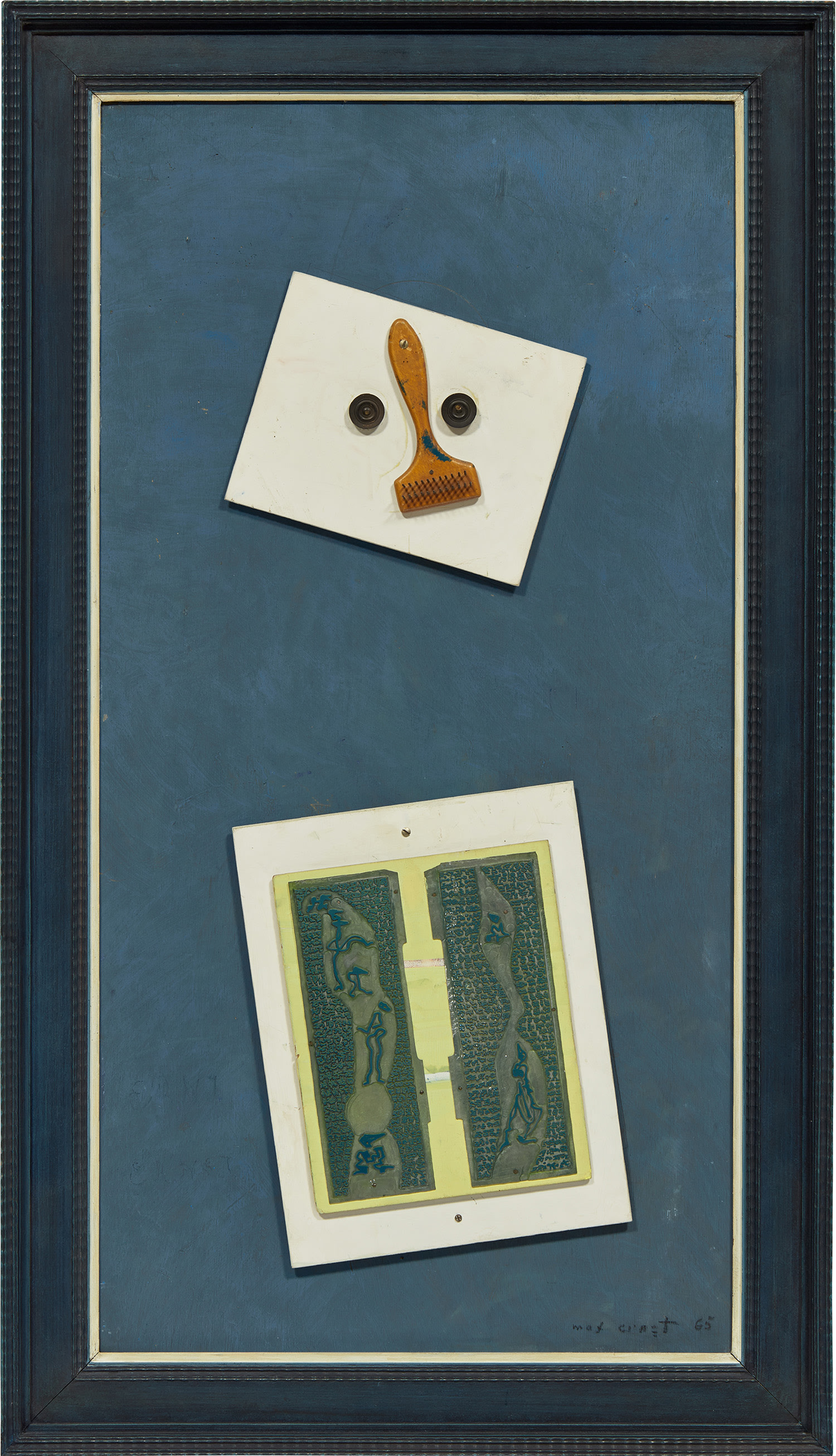



Maximiliana: Max Ernst from the Collection of Peter Schamoni
48
Max Ernst
Portrait de Ernst Wilhelm Leberecht Tempel
signed and dated "max ernst 65" lower right; signed, titled and dated "Ernst Wilhelm Leberecht Tempel max ernst 1965" on the reverse
collage and oil on wood panel
39 1/2 x 20 in. (100.3 x 50.8 cm)
Executed in 1965.